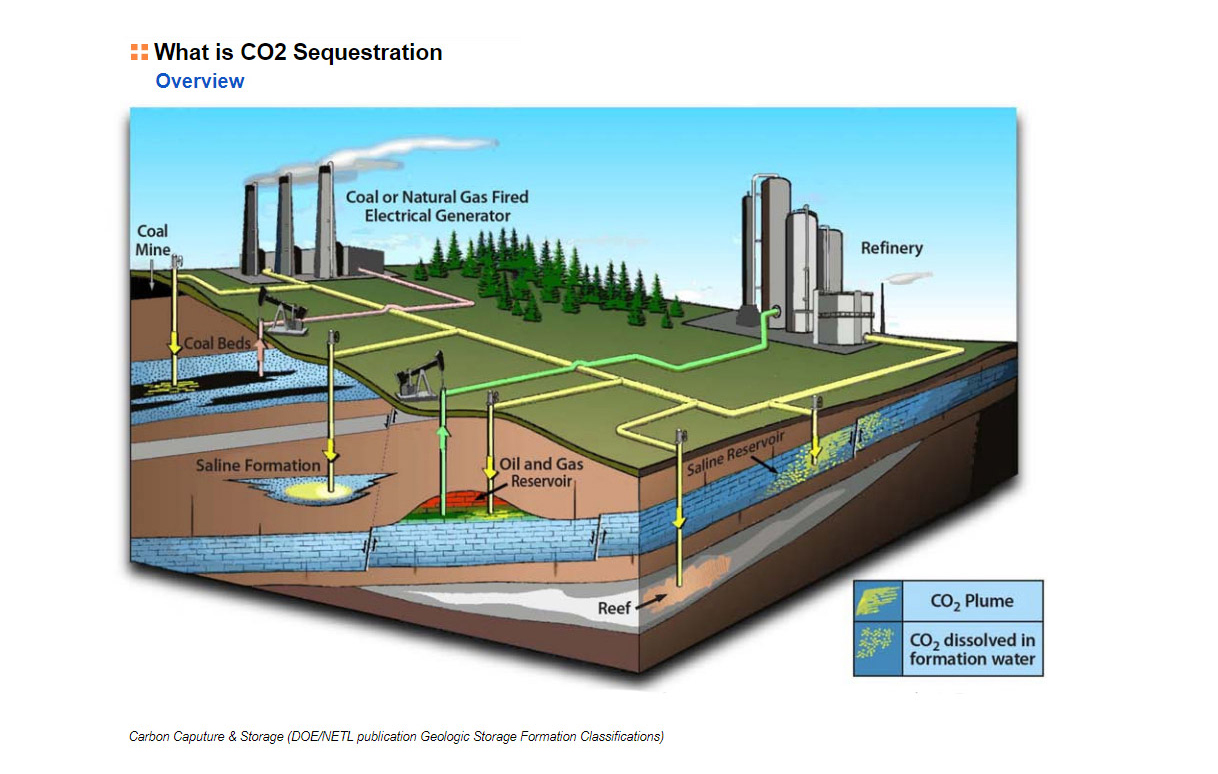What is carbon sequestration?
Carbon Capture Utilization & Sequestration (“CCUS”)
New Licensable Video Coming Soon!
Carbon Capture Utilization & Sequestration (“CCUS”)
This invaluable video features:
- Easy-to-Understand Explanation, Terminology with Accompanying Graphics & Animation
- Importance of CO2 Capture and Sequestration
- The CCS Process: Capture, Compression, Transport & Utilization or Storage
- Types of CO2 Sequestration Sites & Common Characteristics
- Supercritical CO2, Permeability, Porosity, CO2 Injection
- CO2 Enhanced Oil Recovery (EOR)
“CCS is an important component in the broad portfolio of approaches and technologies that will be needed if climate change is to be successfully addressed.” – US DEPT of ENERGY
License this timely resource to educate clients, investors, students, employees, vendors and public groups of all types.
Discounted, Pre-Launch Price for an Unlimited Time Usage License
Special Price for Schools, Universities & Museums
What is carbon sequestration?
What is carbon sequestration?
Carbon dioxide is the most commonly produced greenhouse gas. Carbon sequestration is the process of capturing and storing atmospheric carbon dioxide. It is one method of reducing the amount of carbon dioxide in the atmosphere with the goal of reducing global climate change. The USGS is conducting assessments on two major types of carbon sequestration: geologic and biologic.
How does carbon get into the atmosphere?
Atmospheric carbon dioxide comes from two primary sources—natural and human activities. Natural sources of carbon dioxide include most animals, which exhale carbon dioxide as a waste product. Human activities that lead to carbon dioxide emissions come primarily from energy production, including burning coal, oil, or natural gas.
How much carbon dioxide does the United States and the World emit each year from energy sources?
The U.S. Energy Information Administration estimates that in 2019, the United States emitted 5.1 billion metric tons of energy-related carbon dioxide, while the global emissions of energy-related carbon dioxide totaled 33.1 billion metric tons.
Has the USGS made any Biologic Carbon Sequestration assessments?
The USGS is congressionally mandated (2007 Energy Independence and Security Act) to conduct a comprehensive national assessment of storage and flux (flow) of carbon and the fluxes of other greenhouse gases (including carbon dioxide) in ecosystems.
At this writing, reports have been completed for Alaska, the Eastern U.S., the Great Plains, and the Western U.S.
Which area is the best for geologic carbon sequestration?
It is difficult to characterize one area as “the best” for carbon sequestration because the answer depends on the question: best for what? However, the area of the assessment with the most storage potential for carbon dioxide is the Coastal Plains region, which includes coastal basins from Texas to Georgia. That region accounts for 2,000 metric gigatons, or 65 percent, of the storage potential. Other areas with significant storage capacity include Alaska and the Rocky Mountains-Northern Great Plains.
What’s the difference between geologic and biologic carbon sequestration?
Geologic carbon sequestration is the process of storing carbon dioxide (CO2) in underground geologic formations. The CO2 is usually pressurized until it becomes a liquid, and then it is injected into porous rock formations in geologic basins. This method of carbon storage is also sometimes a part of enhanced oil recovery, otherwise known as tertiary recovery, because it is typically used later in the life of a producing oil well. In enhanced oil recovery, the liquid CO2 is injected into the oil-bearing formation in order to reduce the viscosity of the oil and allow it to flow more easily to the oil well.
Biologic carbon sequestration refers to storage of atmospheric carbon in vegetation, soils, woody products, and aquatic environments. For example, by encouraging the growth of plants—particularly larger plants like trees—advocates of biologic sequestration hope to help remove CO2 from the atmosphere.
How much carbon dioxide can the United States store via geologic sequestration?
In 2013, the USGS released the first-ever comprehensive, nation-wide assessment of geologic carbon sequestration, which estimates a mean storage potential of 3,000 metric gigatons of carbon dioxide. The assessment is the first geologically based, probabilistic assessment, with a range of 2,400 to 3,700 metric gigatons of potential carbon dioxide storage. In addition, the assessment is for the technically accessible potential, meaning that carbon dioxide can be successfully injected using today’s engineering practices and techniques.
Watch our 3D Oil and Gas Animation Demo Reel
Please take a look at our latest technical animation work! You’ll see that our creative team is continuing to push beyond their comfort zone to create that “WOW” experience for every client’s play, tool or oil and gas technology project with our animated graphics. Need to explain enhanced oil recovery, stacked pay or oil investments in unconventional oil? No problem. Our seasoned technical animator team specialize in process, mechanical and industrial animations as seen in our animation demo reel.
With new effects and cutting-edge, 3D modeling software, we can go beyond the norm and create that one of a kind technical animation, illustration, or oil and gas graphic animation you’re looking for! These 3D oil and gas graphics are from many projects we have created up to this point. Look, experience and…

